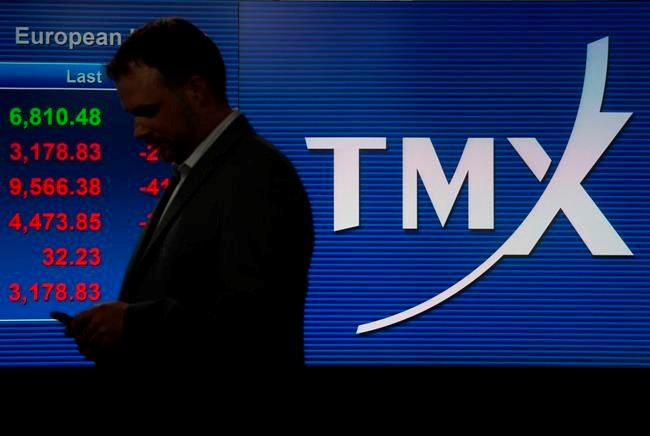TORONTO — Canada's main stock index got its biggest lift in more than a month as its three largest sectors advanced, while U.S. markets also increased despite mixed banking quarterly results.
Energy and materials led the S&P/TSX composite index despite flattish oil prices and a dip in gold. Meanwhile, the heavyweight financials sector also climbed.
In all, the Toronto index closed up 269.04 points or 1.7 per cent to 15,908.45. That's the largest daily gain since June 5.
In New York, the Dow Jones industrial average was up 556.79 points at 26,642.59. The S&P 500 index was up 42.30 points at 3,197.52, while the Nasdaq composite was up 97.73 points at 10,488.58.
Second-quarter bank results were mixed but provisions for credit losses were much higher than expected at nearly US$27 billion for three banks.
Shares of JPMorgan Chase increased after the drop in profits was less than expected on gains in capital markets while Citigroup shares dropped on a steep decline in profits. Wells Fargo sank 4.6 per cent after cutting its dividend and posting its first quarterly loss since the 2008 financial crisis.
Bank executives said in conference calls that they underestimated how long the pandemic would last and its impacts on the overall economy.
"I think you're seeing weakness in the banks generally as some of the smaller regional banks are more heavily weighted towards lending and have less capital markets exposure so less of an offset as we proceed through earnings," said Natalie Taylor, a portfolio manager with CIBC.
Meanwhile, she said there seems to be some flattening in the growth of COVID-19 infections outside of Florida despite larger outbreaks in some states.
"The sense is that maybe the worst in the surge is either near or has already occurred," she said in an interview.
Taylor also said investor sentiment has improved on increased certainty that the U.S. Congress will pass another fiscal stimulus package by the end of the month to extend some income benefits and provide some support to state and local governments.
"The market has continued to look through the spike in cases that we're seeing in the states basically because we're probably not going to see a broad shutdown of the economy again like we did in March and that there's going to be stimulus on the other side," she said.
The Canadian dollar traded for 73.44 cents US compared with 73.71 cents US on Monday.
Ten of the 11 major sectors on the TSX were higher with only real estate decreasing.
Energy rose 4.1 per cent despite slight increases in crude oil and natural gas prices. Seven Generations Energy Ltd. rose 7.9 per cent while Whitecap Resources Inc. and Crescent Point Energy Corp. were up about six and 5.4 per cent respectively.
The August crude contract was up 19 cents at US$40.29 per barrel and the August natural gas contract was up 0.7 of a cent at nearly US$1.75 per mmBTU.
Taylor said the crude oil market is being affected by OPEC discussions about reducing product cuts, which she said would be "manageable in the context of the market."
In addition, former U.S. vice-president Joe Biden's clean energy initiative unveiled Tuesday may not be as punitive for the oil and gas industry as may have been expected.
Materials climbed three per cent with Kinross Gold Corp. up 5.4 per cent and B2Gold Corp. up 4.3 per cent despite lower metals prices.
The August gold contract was down 70 cents at US$1,813.40 an ounce and the September copper contract was down 2.25 cents at US$2.93 a pound.
This report by The Canadian Press was first published July 14, 2020.
Companies in this story: (TSX:VII, TSX:WCP, TSX:CPG, TSX:K, TSX:BTO, TSX:GSPTSE, TSX:CADUSD=X)
Ross Marowits, The Canadian Press



